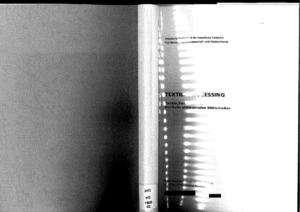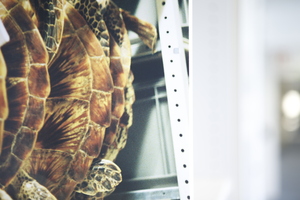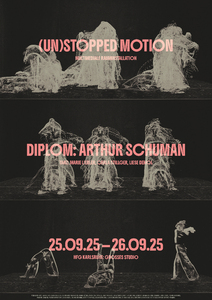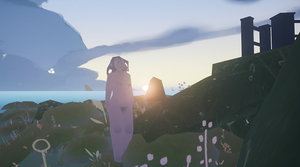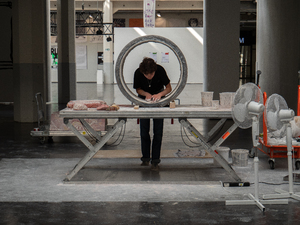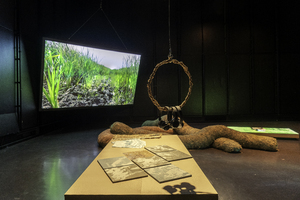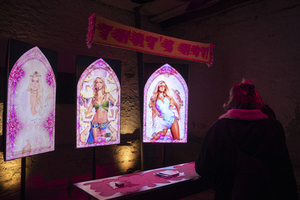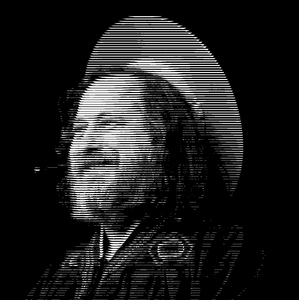The Plenum – A Scripted Play
Benachbarte Sets (34)Alle Zusammenhänge anzeigen
Diese Sets wurden den gleichen Sets hinzugefügt wie das ausgewählte Set.
34 Inhalte
- Seite 1 von 3
Testzentrum für chronischen Automobilismus
- Titel
- Testzentrum für chronischen Automobilismus
- Autor/in
- Beschreibung (de)
- Radweg Ende, kein Zebrastreifen, Parkplatz voll, Bahn verpasst and stop and go, jemand hupt alle schauen, rote Ampel niemand da, falsch abgebogen, Licht vergessen, vollgas Lichthupe, Überholmaneuver trotz Geschwindigkeitsbegrenzung, ups! Personenschaden, Spiegel abgebrochen, Fenster runter „Arschloch!“, selber! Brumm. Kennen Sie das?
Verkehr ist eine höchst emotionale Angelegenheit. Die vielen kleinen Entscheidungen, die wir im automobilen Individualverkehr treffen müssen, sind immer auch mit einem Risiko behaftet. Sehen wir den "Personenschaden" als Katastrophe an, so müssen wir doch zugeben, dass auch die kleinen Fehlentscheidungen für Stress, Frust und Wut sorgen können. Ebendiese Reaktionen möchten wir im Kontext der sogenannten Mobilitätswende anerkennen, attestieren und aus ihnen Forderungen ableiten, die wir gerne für unsere Besucher*innen an die lokalen Behörden weiterleiten.
Auto, Fahrrad, Zufuß? Egal! Unsere 20-minütige Erstuntersuchung richtet sich an alle Verkehrsteilnehmer*innen. Erfahren Sie fachkundige Beratung und die Anwendung neuester Technologie. Tipp: Buchen Sie schon jetzt einen Termin und vermeiden Sie Wartezeiten. Wir freuen uns auf ihren Besuch!
- Radweg Ende, kein Zebrastreifen, Parkplatz voll, Bahn verpasst and stop and go, jemand hupt alle schauen, rote Ampel niemand da, falsch abgebogen, Licht vergessen, vollgas Lichthupe, Überholmaneuver trotz Geschwindigkeitsbegrenzung, ups! Personenschaden, Spiegel abgebrochen, Fenster runter „Arschloch!“, selber! Brumm. Kennen Sie das?
- Kategorie
- Typ des Projekts/Werks
- Schlagworte
- Datierung
- 25.03.2024 - 28.03.2024
- Mitwirkende
- Sprache
- Material
- Technik/Verfahren/Formate
- GameMaker Studio 2 (Game)
- Abmessungen
- 5 x 7,5 m
- Dauer
- 25 Minuten (Erstuntersuchung)
- Ort: Institution
- Stadt
- Land
- Internetlinks
- Bemerkungen
- Dank an: Alexander Knoppik, Alexander Thelen, Anna Haas (Badisches Staatstheater), Astrid Lindner-Maier, Barbara Kuon, Charlotte Singer, Christian Platz, Cornelia Herzog, Daniel Heiss (ZKM), Dario Schmid, Emelie Schreiner, Felix Fisgus, Franzi Wentz, Isabelle Schneider, Julian Kuf, Laura Richter, Leonie Mühlen, Martin Mangold (ZKM), Marvin Uhde (cant-deci.de), Max Bernhard, Miri, Omni-Mobil GmbH, Paula Schacke (die Anstoss e.V.), Pavel Polenz, Ralph Saam (Scheck-In Center Durlach), Richard Brunner, Sebastian Schäfer, Sebastian Schillbach, Sebastian Schönfeld, Silke Roth (die Anstoss e.V.), Susanne Henneberger (WERKRAUM: Karlsruhe e.V.), Susanne Schmitt, Sven Krahl, Timothée Charon, Tobias Keilbach, Tjark Schönfeld, Ute Wienberg (Badisches Staatstheater), Vlado Petrovic, Waldemar Schwab, Yun-Wen Liu
- Dank an: Alexander Knoppik, Alexander Thelen, Anna Haas (Badisches Staatstheater), Astrid Lindner-Maier, Barbara Kuon, Charlotte Singer, Christian Platz, Cornelia Herzog, Daniel Heiss (ZKM), Dario Schmid, Emelie Schreiner, Felix Fisgus, Franzi Wentz, Isabelle Schneider, Julian Kuf, Laura Richter, Leonie Mühlen, Martin Mangold (ZKM), Marvin Uhde (cant-deci.de), Max Bernhard, Miri, Omni-Mobil GmbH, Paula Schacke (die Anstoss e.V.), Pavel Polenz, Ralph Saam (Scheck-In Center Durlach), Richard Brunner, Sebastian Schäfer, Sebastian Schillbach, Sebastian Schönfeld, Silke Roth (die Anstoss e.V.), Susanne Henneberger (WERKRAUM: Karlsruhe e.V.), Susanne Schmitt, Sven Krahl, Timothée Charon, Tobias Keilbach, Tjark Schönfeld, Ute Wienberg (Badisches Staatstheater), Vlado Petrovic, Waldemar Schwab, Yun-Wen Liu
- Titel
- Testzentrum für chronischen Automobilismus
- Projektleiter/in
- Semester
- Studiengang
- Typ der Abschlussarbeit
- Importiert am
- 31.05.2024
- Übergeordnete Sets
- 2
- Set enthält
- 0 0
Textile Processing
- Titel
- Textile Processing
- Untertitel
- Punkte, Zeilen, Spalten; Vorläufer elektronischer Bildtechniken
- Autor/in
- Beschreibung (de)
- “Die Ähnlichkeiten von Geweben, Mustervorlagen und heutigen Rasterbildern sind eklatant. In einer Genese der technischen Bilder kann das Gewebe als Exemplarfall und Vorreiter aller technisch-elektronischer Bilder gelten.”
“Die ersten Bilder, die von ihrem Bildkörper abgelöst wurden, bestanden aus einem Stapel gelochter Karten für die Verwendung im Jacquardwebstuhl. Der Bildcode ist hier noch begreifbar, das Bild, wenn es aus dem Stapel dieser Karten gewoben wird, ein textil-taktiles Produkt. Patricia Wallers Needle-Works zeigen die Leerstelle heutiger Bildmaschinen auf, wo Bilder auf Monitoren erscheinen, um im nächsten Moment schon wieder durch den nächsten (Netzhaut-) Eindruck ausgetauscht zu werden.”
- “Die Ähnlichkeiten von Geweben, Mustervorlagen und heutigen Rasterbildern sind eklatant. In einer Genese der technischen Bilder kann das Gewebe als Exemplarfall und Vorreiter aller technisch-elektronischer Bilder gelten.”
- Beschreibung (en)
- “The similarities between fabrics, patterns and today's raster images are striking. In the genesis of technical images, the fabric can be regarded as an exemplary case and forerunner of all technical-electronic images.”
“The first images that were detached from their image body consisted of a stack of perforated cards for use in the Jacquard loom. The image code is still comprehensible here, the image, when woven from the pile of these cards, is a textile-tactile product. Patricia Waller's needle works show the blank space of today's image machines, where images appear on monitors only to be replaced by the next (retinal) impression in the very next moment.”
- “The similarities between fabrics, patterns and today's raster images are striking. In the genesis of technical images, the fabric can be regarded as an exemplary case and forerunner of all technical-electronic images.”
- Kategorie
- Typ des Projekts/Werks
- Schlagworte
- Datierung
- 02.11.1998
- Sprache
- Ort: Institution
- Stadt
- Titel
- Textile Processing
- Projektleiter/in
- Semester
- Studiengang
- Typ der Abschlussarbeit
- Archiv-Signatur
- HfG HS 1998 02
- Externes Archiv
- Importiert am
- 11.01.2024
- Übergeordnete Sets
- 0
- Set enthält
- 0 2
The Violent Container
- Titel
- The Violent Container
- Titel (en)
- The Violent Container
- Untertitel
- Exhibition and handbook
- Untertitel des Projekts/Werks (en)
- Exhibition and handbook
- Autor/in
- Beschreibung (de)
- „The Violent Container“ konzentriert sich auf das kulturelle Phänomen des Käfigs und das Einsperren als Praxis, um Objekte oder Körper einzuschließen, zu kategorisieren, einzuschränken und sich anzueignen – sowie als Mittel, um sie zu sammeln, zu schätzen, zu bewahren und zu schützen.
Das Projekt umfasst eine Ausstellung und eine Publikation, die die verschiedenen Eigenschaften und Funktionen der sich wandelnden Formen des Käfigs untersuchen und dabei erforschen, wie Käfige nicht nur die Verwaltung lebender oder toter Körper und Objekte ermöglichen, sondern auch die Art und Weise bestimmen, wie wir sie wahrnehmen.
- „The Violent Container“ konzentriert sich auf das kulturelle Phänomen des Käfigs und das Einsperren als Praxis, um Objekte oder Körper einzuschließen, zu kategorisieren, einzuschränken und sich anzueignen – sowie als Mittel, um sie zu sammeln, zu schätzen, zu bewahren und zu schützen.
- Beschreibung (en)
- "The Violent Container" focuses on the cultural phenomenon of the cage, and caging as a practice to contain, categorise, restrict, and appropriate objects or bodies – as well as a tool to collect, treasure, preserve, and protect them.
The project comprises an exhibition and a publication that examine the various properties and functions of the cage’s shifting forms, exploring how cages not only enable the administration of living or dead bodies and objects, but also govern the ways in which we perceive them.
- "The Violent Container" focuses on the cultural phenomenon of the cage, and caging as a practice to contain, categorise, restrict, and appropriate objects or bodies – as well as a tool to collect, treasure, preserve, and protect them.
- Kategorie
- Typ des Projekts/Werks
- Schlagworte
- Mitwirkende
- Ort
- Rheinstetten, Karlsruhe
- Titel
- The Violent Container
- Projektleiter/in
- Semester
- Studiengang
- Typ der Abschlussarbeit
- Importiert am
- 21.09.2025
- Übergeordnete Sets
- 0
- Set enthält
- 0 14
(Un)Stopped Motion
- Titel
- (Un)Stopped Motion
- Titel (en)
- (Un)Stopped Motion
- Autor/in
- Beschreibung (de)
- In dieser interdisziplinären Arbeit wird der schleichende Prozess der Selbstkontrolle als Reaktion auf äußere Störungen untersucht. Ausgangspunkt ist die Angst, einen Fehler zu begehen, die nicht mit einem sichtbaren Eingriff beginnt, sondern sich langsam in das Bewegungsrepertoire des Körpers einschreibt, bis sie schließlich zum Stillstand führt.
Die Performance beginnt mit einem weiten, freien Tanz, in dem der Körper sich offen, intuitiv und raumgreifend entfaltet. Doch diese Freiheit wird zunehmend durch einen äußeren akustischen Impuls gestört: das Geräusch einer fallenden, zerspringenden Tasse. Der Klang ist vertraut und alltäglich, doch ebenso tief aufgeladen mit dem Gefühl von Schuld und Unachtsamkeit. Mit jeder Wiederholung gräbt sich der Impuls tiefer in das Bewegungsverhalten ein. Jede Unterbrechung trägt zur Verunsicherung bei und lässt den Bewegungshorizont immer stärker einschränken.
Die Performance wird aus mehreren Perspektiven gefilmt. Diese Aufnahmen aus verschiedenen Blickachsen eines überwachenden Apparats, werden in der Installation projiziert.
Sich selbst im Blick ist eine Annäherung an das Innehalten, das Sich-Einschränken, das Verstummen, eine Untersuchung jener Schwelle, an der Handlung in Beobachtung kippt, Bewegung in Misstrauen.
- In dieser interdisziplinären Arbeit wird der schleichende Prozess der Selbstkontrolle als Reaktion auf äußere Störungen untersucht. Ausgangspunkt ist die Angst, einen Fehler zu begehen, die nicht mit einem sichtbaren Eingriff beginnt, sondern sich langsam in das Bewegungsrepertoire des Körpers einschreibt, bis sie schließlich zum Stillstand führt.
- Beschreibung (en)
- This interdisciplinary work examines the creeping process of self-control as a response to external disturbances. The starting point is the fear of making a mistake, which does not begin with a visible intervention, but slowly inscribes itself into the body's repertoire of movements until it finally leads to a standstill.
The performance begins with a wide, free dance in which the body unfolds openly, intuitively and expansively. But this freedom is increasingly disturbed by an external acoustic impulse: the sound of a cup falling and shattering. The sound is familiar and everyday, but equally deeply charged with feelings of guilt and carelessness. With each repetition, the impulse digs deeper into the movement behaviour. Each interruption contributes to the uncertainty and causes the horizon of movement to become increasingly restricted.
The performance is filmed from several perspectives. These recordings from different viewing angles of a surveillance device are projected in the installation.
Seeing oneself is an approach to pausing, restricting oneself, falling silent, an investigation of that threshold where action tips into observation, movement into mistrust.
- This interdisciplinary work examines the creeping process of self-control as a response to external disturbances. The starting point is the fear of making a mistake, which does not begin with a visible intervention, but slowly inscribes itself into the body's repertoire of movements until it finally leads to a standstill.
- Kategorie
- Typ des Projekts/Werks
- Schlagworte
- Datierung
- 24.09.2025 - 29.09.2025
- Mitwirkende
- Dank an
- Material
- Abmessungen
- 4x Screens 1,8x2,8 m
- Dauer
- 08:30
- Ort: Institution
- Ort
- Großes Studio, HfG Karlsruhe
Screen, HfG Karlsruhe
- Großes Studio, HfG Karlsruhe
- Stadt
- Land
- Titel
- (Un)Stopped Motion
- Projektleiter/in
- Semester
- Studiengang
- Typ der Abschlussarbeit
- Importiert am
- 21.10.2025
- Übergeordnete Sets
- 0
- Set enthält
- 4 0
Vakna
- Titel
- Vakna
- Titel (en)
- Vakna
- Untertitel
- Der menschliche Körper. Das Wiederentdecken. Das Akzeptieren. Das Erwachen
- Autor/in
- Beschreibung (de)
- Der menschliche Körper.
Das Wiederentdecken.
Das Akzeptieren.
Das Erwachen.
Diese Gedanken sind der Beginn des Spiels Vakna, einer Gedankenwelt, die sich mit der Wahrnehmung und der Akzeptanz des unbekleideten menschlichen Körpers befasst und dadurch gesellschaftliche Einflüsse hinterfragt.
In dieser Gedankenwelt ist es dem/der Spieler/in möglich durch auffindbare Fragen und Aussagen mehr über sich selbst, die eigene Wahrnehmung, das eigene Verhalten, die eigene Moral und die eigenen rituellen Gedankengänge den menschlichen Körper betreffend herauszufinden.
Die Gedankenwelt Vakna erwacht gemeinsam mit der spielenden Person, welche vielleicht beginnt die eigene Wahrnehmung, das eigene Verhalten, die eigene Moral und die eigenen rituellen Gedankengänge den menschlichen Körper betreffend zu hinterfragen, für sich selbst und gegenüber anderen Menschen neu zu ordnen oder zu verändern.
Am Ende dieses Spiels hat jede Person für sich selbst zu entscheiden, ob das Wiedererwachen des Körpers und damit verbundene „Neu-Erleben“ der Welt ausprobiert oder gelebt werden möchte.
Auch sind die Fragen zu beantworten, wie mit der neugewonnen Akzeptanz und Wiederentdeckung umzugehen ist. Doch hat die spielende Person bei dieser Entscheidung sich nicht dem Spiel gegenüber zu verantworten, sondern sich selbst und den Mitmenschen der Gesellschaft.
Bei diesem Computerspiel handelt es sich um einen Single-Player im Bereich der Serious- und Educational-Games, das mit Tastatur und Maus gespielt werden kann.
- Der menschliche Körper.
- Beschreibung (en)
- The human Body.
The Rediscovery.
The Accepting.
The Awakening.
These thoughts are the beginning of the game Vakna, a world of thoughts that deals with the perception and acceptance of the human body without clothes, thereby questioning social influences.
In this world of thoughts it is possible for the player to find out more about himself, his own perception, his own behavior, his own morality and his own ritual thoughts concerning the human body through discoverable questions and statements.
Vakna awakens together with the player. The player begins to question the own perception, the own behavior, the own morality and the own ritual thought processes concerning the human body and perhaps to rearrange or change them for themselves and for other people.
At the end of this game, each person has to decide for himself whether the body's reawakening and the „re-experiencing“ of the world would be tried out or lived.
Also, the questions to be answered are how to deal with the newly gained acceptance and rediscovery. But in this decision, the player does not have to answer to the game, but to himself and the fellow human beings of society.
This computer game is a single player in the field of serious and educational games that can be played with a keyboard and a mouse.
- The human Body.
- Typ des Projekts/Werks
- Schlagworte
- Datierung
- 21.11.2018
- Mitwirkende
- Sprache
- Material
- Technik/Verfahren/Formate
- Computerspiel für Windows
- Abmessungen
- 3D
- Ort
- Hochschule für Gestaltung Karlsruhe
- Stadt
- Land
- Internetlinks
- Titel
- Vakna
- Importiert am
- 16.11.2018
- Übergeordnete Sets
- 1
- Set enthält
- 1 21
Visitors
- Titel
- Visitors
- Autor/in
- Beschreibung (en)
- “Visitors” takes as its focus the works of international students from HfG Karlsruhe. The exhibition aims to shed light on the different geographical, political and economic backgrounds that come together in our institution. Two main resources for our work will be HfG's archiving platform Madek and its analogue exhibition interface Portal that the HfG Open Resource Center has been developing.
How do people from abroad who study at the HfG shape the place? How do international students contribute to and challenge the HfG? We will work on preparing and realizing an exhibition based on diploma works of international students from previous generations.
For Visitors we have imagined an alternative geography or an alternative biography of HfG. It is designed around people who ‘visit’ and explore what that challenging gesture means.
- “Visitors” takes as its focus the works of international students from HfG Karlsruhe. The exhibition aims to shed light on the different geographical, political and economic backgrounds that come together in our institution. Two main resources for our work will be HfG's archiving platform Madek and its analogue exhibition interface Portal that the HfG Open Resource Center has been developing.
- Typ des Projekts/Werks
- Mitwirkende
- Sprache
- Titel
- Visitors
- Importiert am
- 27.05.2024
- Übergeordnete Sets
- 1
- Set enthält
- 0 0
Vordiplom Hannah Gebert
- Titel
- Vordiplom Hannah Gebert
- Titel (en)
- "fake it till you make it"
- Autor/in
- Beschreibung (de)
- Stuckmarmor ist eine historische Stucktechnik des 16. und 17. Jahrhunderts aus Italien, die für ihre Marmorimitation bekannt ist. Dabei wurden Gips, Wasser, Pigmente und tierischer Leim gemischt, um marmorähnliche Oberflächen zu schaffen.
"Fake it till you make it" ist eine Erkundung dieses traditionellen Handwerks. Ziel ist es, die alte Kunst der Marmorimitation wiederzubeleben und ihre ästhetischen Werte in der heutigen Welt zu präsentieren. Darüber hinaus befasst sich das Projekt mit der Frage, was "echt" und was "unecht" ist, und untersucht die Rolle der Inszenierung. Inspiriert von den drei Teilen einer Säule (Basis, Schaft, Kapitell) habe ich drei Objekte entwickelt, die als Einzelstücke im Raum zu finden sind. Alle drei Objekte sind aus Holz gefertigt, zwei davon durch ein Stahlgerüst stabilisiert. Die Unterkonstruktion wurde dann mit Streckmetall verkleidet, verputzt und diente schließlich als Untergrund für den Stuckmarmor. Ein Making-of-Video zeigt die Herstellung des Stuckmarmors. Jedes der Objekte ist auf eine andere Art und Weise verkleidet, um die Konstruktion nicht immer zu verbergen, sondern sie vielmehr zu enthüllen, ganz nach dem Motto "fake it till you make it".
- Stuckmarmor ist eine historische Stucktechnik des 16. und 17. Jahrhunderts aus Italien, die für ihre Marmorimitation bekannt ist. Dabei wurden Gips, Wasser, Pigmente und tierischer Leim gemischt, um marmorähnliche Oberflächen zu schaffen.
- Beschreibung (en)
- Stucco marble is a historic plasterwork technique originating from 16th and 17th-century Italy, celebrated for its imitation of marble. This involved blending gypsum plaster, water, pigments, and animal glue to create marble-like surfaces.
„fake it till you make it“ is an exploration of this traditional craft of stucco marble. The aim is to revive the ancient art of imitating marble and to present its aesthetic values in today‘s world. In addition, the project will address the question of what is „real“ and what is „fake“ and examine the role of staging. Inspired by the three parts of a column (base, shaft, capital) I have developed three objects that can be found as individual pieces in the room. All three objects are made of wood, two of them stabilized by a steel framework. Ribbed expanded metal lath was then stapled onto the wood and plastered, serving as the base for the stucco marble. A making of video shows the production of the stucco marble. Each of the objects is covered in a different way, intended not to always conceal the construction but rather to reveal it, embodying the spirit of „fake it till you make it.“
- Stucco marble is a historic plasterwork technique originating from 16th and 17th-century Italy, celebrated for its imitation of marble. This involved blending gypsum plaster, water, pigments, and animal glue to create marble-like surfaces.
- Kategorie
- Typ des Projekts/Werks
- Schlagworte
- Datierung
- 25.06.2024
- Material
- Ort: Institution
- Ort
- An der Säule unter der Lichtbrücke
- Stadt
- Land
- Titel
- Vordiplom Hannah Gebert
- Projektleiter/in
- Studiengang
- Importiert am
- 22.05.2024
- Übergeordnete Sets
- 1
- Set enthält
- 0 13
"Wet again"
- Titel
- "Wet again"
- Untertitel
- Wahrnehmung und Abstraktion von Erhaltungsarbeit im ländlichen Raum
- Untertitel des Projekts/Werks (en)
- Perception and abstraction of maintenance work in the rural
- Autor/in
- Beschreibung (de)
- „Wet again“ ist das Ergebnis eines zweijährigen Prozess von Laura Haak, eine Moorregion als Akteur
wahrzunehmen und zu begleiten. Es liegt in einem abgelegenen Terrain im Nordosten Deutschlands nahe dem
Kummerower See im Malchiner Umland.
In einer Feldforschung wurde viel Zeit verbracht, Scores der Zusammenarbeit entwickelt, Wander und Kanu Routen 1:1 erschlossen. Dabei entstand ein Austausch mit den Menschen vor Ort, die eine längere Beziehung zum Torfboden pflegen und sich für die Wiedervernässung von Moorböden lokal und europaweit einsetzen.
Es entstand ein Gewebe aus verschiedenen Wahrnehmungsperspektiven und die Frage nach ihren machtpolitischen Auswirkungen auf ländliche Gestaltungsprozesse.Was sind die neuen Choreografien der Erhaltungsarbeit, auf welche Perspektiven wird Bezug genommen?
Auf mehreren Testfeldern der Universität Greifswald und des Greifswald Moor Instituts werden aktuell Daten gesammelt, die zu einer Umstellung der europäischen Subventionierung von Moorkulturen genutzt werden. Lokale Archivmaterialien über einen Hexenprozess, hochstaplerische Ritterbrüder aus Lüneburg und DDR Fdj Jugendcamps für staatliche Meliorationsvorhaben geben Einblick in die historische Dimensionen.
Lokale Künstler und Umweltwissenschaftler schaffen Austauschorte für ökologisch bezogene Kulturarbeit.
Landwirte die mit den sehr existenziellen Fragen der direkten Übersetzung der Ideen konfrontiert sind,-und über 5000 Jahre intakte Bodenproben die als eigenes Archiv eine noch viel längere viel größere Geschichte zu erzählen haben.
Eindrücke und Materialien dieser Zeit verarbeitet Laura Haak in einer Installation aus 4 unterschiedlich langen Videoessays mit immersiver Soundcollage, bedruckten lokal hergestellten Grasfaserplatten, einer Projektionsfläche aus Agaragar und Paludikulturen und einer Sitzinstallation aus 130kg Seggenrohrgras
der vor Ort gefilmten Felder.
Ein Reader mit gesammelten Materialien und textlichen Einordnungen inspiriert von Essays von Tim Ingold schlägt eine Dramaturgie vor, die im Sinne der eigenen Wahrnehmung verworfen werden kann.
- „Wet again“ ist das Ergebnis eines zweijährigen Prozess von Laura Haak, eine Moorregion als Akteur
- Beschreibung (en)
- ‘Wet again’ is the result of a two-year process by Laura Haak to perceive and accompany a moorland region as an acting entity.
It is located in a remote area in north-eastern Germany near Lake Kummerow in the Surrounding Malchin.
A lot of time was spent conducting field research, developing scores of collaboration, and tracing hiking and canoe routes 1:1.
This led to an exchange with local people who have a long-standing relationship with the peat soil and are committed to the rewetting of moorland soils both locally and across Europe.
A fabric of different perspectives emerged, along with questions about their power-political implications for rural design processes. What are the new choreographies of maintenance work, and what perspectives are being referred to?
Data is currently being collected at several test sites at the University of Greifswald and the Greifswald Moor Institute, which will be used to change European subsidies for moorland cultivation. Local archive materials about a witch trial, impostor knights from Lüneburg and GDR Fdj youth camps for national drainage projects provide insight into the historical dimensions.
Local artists and environmental scientists are creating places of exchange for ecologically-related cultural work.
Farmers who are confronted with the very existential questions of directly translating ideas,- And over 5,000 years intact soil samples that, as an archive in their own, have an even longer and much greater story to tell.
Laura Haak processes impressions and materials from this period in an installation consisting of four video essays of varying lengths with an immersive sound collage, printed locally produced grass fibre boards, a projection surface made of agar agar and paludicultures, and a seating installation made of 130 kg of sedge grass
from the fields filmed on site.
A reader with collected materials and textual classifications inspired by essays by Tim Ingold suggests a dramaturgy that can be discarded in the sense of one's own perception.
- ‘Wet again’ is the result of a two-year process by Laura Haak to perceive and accompany a moorland region as an acting entity.
- Kategorie
- Typ des Projekts/Werks
- Schlagworte
- Datierung
- Zwei Sommer und ein Frühjahr 2023-2025
- Sprache
- Ort
- Achknoledgements:
Dr Uta Berghöfer, Dr Joachim Borner Martina Zienert
from Projekthof Karnitz , Nora Köhn from University
Greifswald, Dr Ulf Schiefelbein from Ministry for
Climate Protection, Agriculture, Rural Areas and
the Environment Mecklenburg-Western Pomerania
, Tobias Dahms from thermal drones GmbH, Richard
Hurding from Zelfo Technology GmbH, the paludi
farmers Ludwig Bork and Henning Voigt,
Frank Zimmermann from "Uns lütt Museum“ Dargun
and sculptor Kathrin Wetzel for their time and
willingness to show themselves, interesting and
realizing conversations, the opportunity for a bird‘s eye
view and 150 kilograms of sedge cane grass,
Tim
Ingolds for loaning captions and providing impulses
for thoughts and perception
Celine Condorelli, Jaya Demmer, Lina Determann, Mascha Dilger, Benjamin Eisele, Constanze Fischbeck, Hanna Franke, Vera Gärtner, Marlene-, Michael-, Birgit- and Michaela Haak, Mira Hirtz, Franka Kampmeier, Alexander Knoppig, Hanne König, Christian‘Lübben, Leonie Mühlen, Wiebke Muller, Leonie Müller, Laura Morcillo and ZeitBildLab, Luise Peschko, Nis Petersen, Sebastian Schafer, Susanne Schmitt, Josefine Scheu, Phillip Schell, Arthur Schuman, Henriette Schwabe, Claud Teichmann, Alexander Thelen, Johannes Thimm, Leia Walz, Isabel Winter for countless support, the best of times, carrying hands, attentive eyes and continuous inquiries and Paulina Mimberg for the most splendid graphic.
- Achknoledgements:
- Titel
- "Wet again"
- Projektleiter/in
- Semester
- Studiengang
- Typ der Abschlussarbeit
- Importiert am
- 30.06.2025
- Übergeordnete Sets
- 0
- Set enthält
- 2 3
WHERE LEGENDS ARE MADE AND LIES ARE TOLD
- Titel
- WHERE LEGENDS ARE MADE AND LIES ARE TOLD
- Autor/in
- Beschreibung (de)
- WHERE LEGENDS ARE MADE AND LIES ARE TOLD (graduation project). Originated by this divine union of @parishilton @britneyspears @lindsaylohan (aka the Holy Trinity <3) the night of the infamous Bimbo Summit, WLAMALAT is the visual and critical translation of my obsession for the #y2k it-girls and #popculture in general. Mixing a religious with a highly commercial aesthetic, the project questions several topics such as women representation in the mass media, visual/celebrity culture consumption and new belief systems.
- WHERE LEGENDS ARE MADE AND LIES ARE TOLD (graduation project). Originated by this divine union of @parishilton @britneyspears @lindsaylohan (aka the Holy Trinity <3) the night of the infamous Bimbo Summit, WLAMALAT is the visual and critical translation of my obsession for the #y2k it-girls and #popculture in general. Mixing a religious with a highly commercial aesthetic, the project questions several topics such as women representation in the mass media, visual/celebrity culture consumption and new belief systems.
- Beschreibung (en)
- WHERE LEGENDS ARE MADE AND LIES ARE TOLD (graduation project). Originated by this divine union of @parishilton @britneyspears @lindsaylohan (aka the Holy Trinity <3) the night of the infamous Bimbo Summit, WLAMALAT is the visual and critical translation of my obsession for the #y2k it-girls and #popculture in general. Mixing a religious with a highly commercial aesthetic, the project questions several topics such as women representation in the mass media, visual/celebrity culture consumption and new belief systems.
- WHERE LEGENDS ARE MADE AND LIES ARE TOLD (graduation project). Originated by this divine union of @parishilton @britneyspears @lindsaylohan (aka the Holy Trinity <3) the night of the infamous Bimbo Summit, WLAMALAT is the visual and critical translation of my obsession for the #y2k it-girls and #popculture in general. Mixing a religious with a highly commercial aesthetic, the project questions several topics such as women representation in the mass media, visual/celebrity culture consumption and new belief systems.
- Kategorie
- Typ des Projekts/Werks
- Datierung
- 06.12.23
- Dank an
- Ort
- Rudolf 5
- Titel
- WHERE LEGENDS ARE MADE AND LIES ARE TOLD
- Projektleiter/in
- Semester
- Studiengang
- Typ der Abschlussarbeit
- Importiert am
- 05.11.2024
- Übergeordnete Sets
- 1
- Set enthält
- 3 8
Who cares?
- Titel
- Who cares?
- Titel (en)
- Who Cares?
- Untertitel
- Digitale Sozialität, Infrastrukturen der Fürsorge und konviviale Technologien
- Untertitel des Projekts/Werks (en)
- Digital sociality, care infrastructure and convivial technology
- Autor/in
- Beschreibung (de)
- Die Hackerkultur verbindet Theorie und Praxis (nach hand-on Prinzipien) und einen neuen Ansatz für Kulturmaterialien ("information wants to be free"), der nicht nur eine andere Epistemologie, sondern auch einen neuen politischen Diskurs über Digitalität, Geräte und Menschen impliziert. Das Verhältnis zwischen Technik und Politik dieser Gruppe wird im ersten Kapitel analysiert: Zuerst wird die Entstehung proprietärer Software betrachtet, dann die Unterschiede zwischen Open Source und freier Software, und wie im letzten die Privateigentum und die soziale Beziehung zwischen Programmen, Benutzern und Entwicklern radikal in Frage gestellt werden. Später wird diese Beziehung anhand von Hanna Arendts 'Die conditio humana' in Bezug auf Arbeit, Herstellen und Handlen, Notwendigkeit und Freiheit, die die Bedingungen für Politik schaffen, weiter diskutiert. Im zweiten Kapitel wird das Konzept der Konvivialität (Ivan Illich) vorgestellt und diskutiert. Diese Idee wird später in der Wartung als infrastrukturelle Vorsorge weiterentwickelt und als ein zentrales Element digitaler Technologien vorgeschlagen, das weiter diskutiert werden sollte. Diese Konstellation des Denkens und Handelns, des Spielens und Lernens, des Experimentierens und der Übernahme von Verantwortung sowie der Politik und der sozialen Beziehungen sollte in der Technologiedebatte eine wichtige Rolle spielen.
- Beschreibung (en)
- Hacker culture connects theory and praxis (following hand-on principles) and a new approach to culture materials ("information wants to be free"), that implies not only a different epistemology, but also a new political discourse on digitality, devices, and people. The relation between technic and politic of this group is analyzed in the first chapter: first focusing on the emergence of proprietary software; then considering the differences between open source and free software, the last one challenging radically the notion of private property and the social relation among programs, users, and developers. Later on, reading Hanna Arendts 'The Human condition, the relation will be further discussed in terms of labor, work and action, necessity and freedom, which establish the conditions for politics. In the second chapter, the concept of conviviality (Ivan Illich) is introduced and discussed. This idea is later developed in maintenance as infrastructural care and proposed as a central element of digital technologies that should be further discussed. This constellation of thinking and acting, playing and learning, experimenting and taking responsibility, as well as politics and social relations should play a prominent role in the debate about technology.
- Kategorie
- Typ des Projekts/Werks
- Schlagworte
- Datierung
- 30.03.2023
- Sprache
- Titel
- Who cares?
- Projektleiter/in
- Semester
- Studiengang
- Typ der Abschlussarbeit
- Importiert am
- 30.11.2023
- Übergeordnete Sets
- 3
- Set enthält
- 0 4
